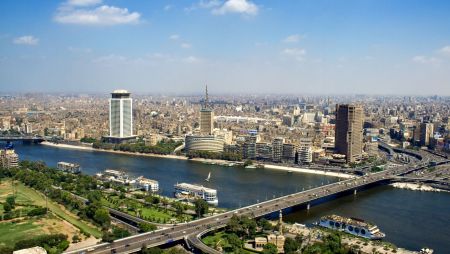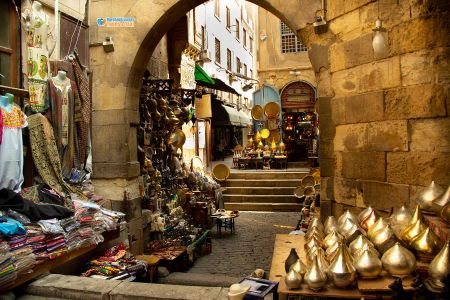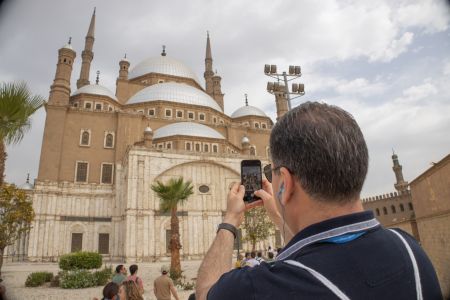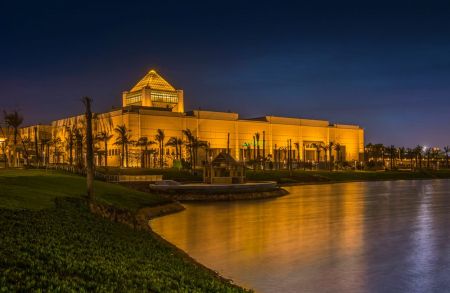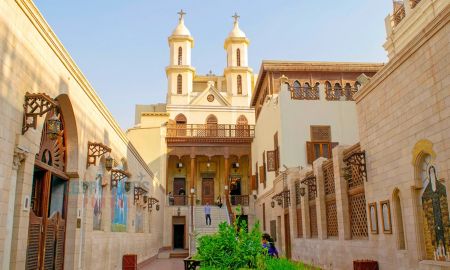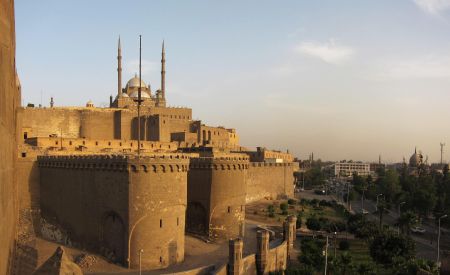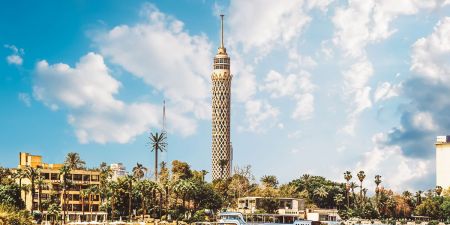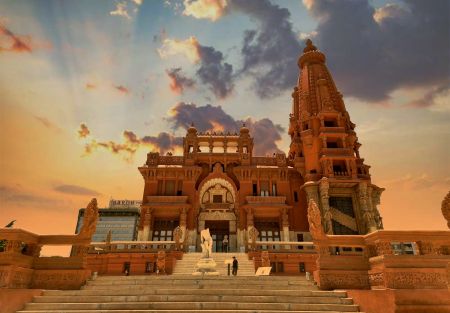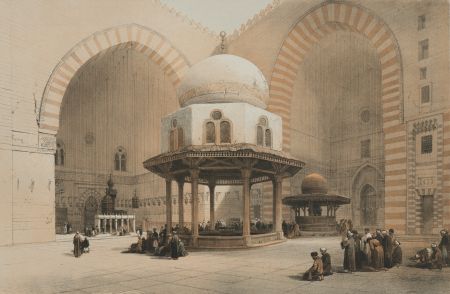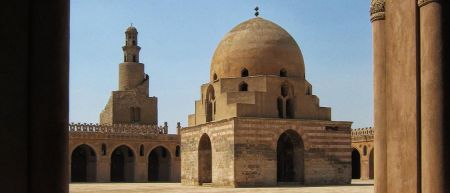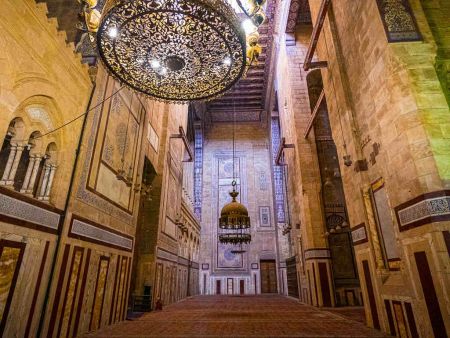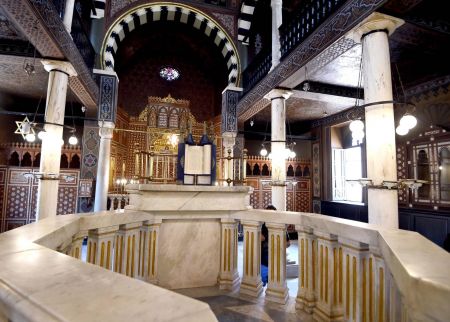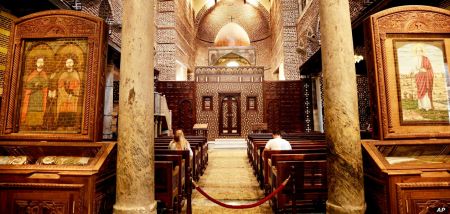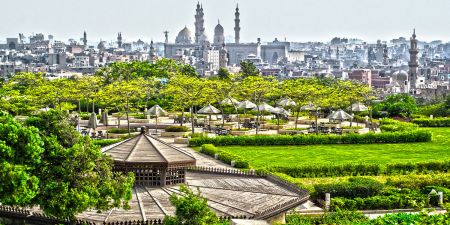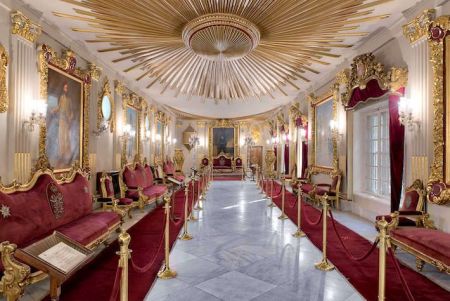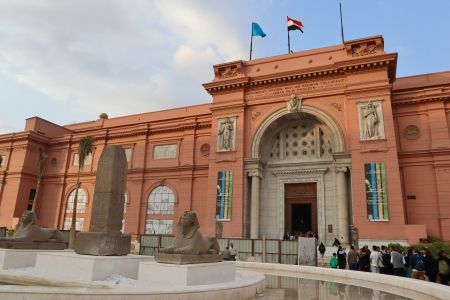The Coptic Museum

Step Inside the Rich Legacy of Egypt’s Coptic Museum
Tucked away in the heart of Old Cairo, The Coptic Museum is a true hidden gem brimming with centuries of Christian Egyptian art, culture, and history. It stands proudly within the fortress of Babylon, a site with deep Roman and Christian roots. Far more than a simple repository of artifacts, the museum is a living chronicle of Egypt’s Coptic era—a period often overlooked but deeply influential. Whether you're a history buff, art enthusiast, pilgrim, or curious traveler, The Coptic Museum offers a soulful journey through time. With over 16,000 priceless relics spread across well-preserved galleries, the museum paints an intricate picture of life in early Christian Egypt, blending Pharaonic traditions, Greco-Roman influences, and early Christian symbolism into one powerful narrative.
Established in 1908 by Marcus Simaika Pasha, The Coptic Museum was more than just a preservation effort—it was a cultural revolution. Simaika’s dream was to protect and celebrate the Coptic legacy, especially at a time when its treasures were at risk of being lost or stolen. Today, the museum continues his vision by housing one of the largest and most comprehensive collections of Coptic art in the world.
Let’s delve into the museum’s rich timeline, collections, architectural marvels, and unmatched religious significance, while uncovering everything modern travelers need to know to make the most of their visit to The Coptic Museum in Cairo.
Historical Background of The Coptic Museum
The Vision of Marcus Simaika and the Birth of the Museum
Marcus Simaika Pasha was a passionate Copt, a parliamentarian, and a cultural visionary who recognized the importance of protecting Egypt’s Coptic artifacts. In 1908, he established the museum within the walls of the Babylon Fortress—one of the oldest parts of Cairo—right beside famous landmarks like The Hanging Church and Abu Serga Church. By gathering donations from monasteries, churches, and individuals across Egypt, Simaika laid the foundation for what would become a national and spiritual landmark.
Egypt’s Coptic Era in Historical Context
The term "Coptic" refers to Egyptian Christians and the era following the arrival of Christianity in Egypt during the first century AD. The Coptic period flourished during the Roman and Byzantine empires and saw the development of a unique artistic style blending Greco-Roman motifs with Pharaonic imagery and early Christian themes. This synthesis is at the heart of the museum's mission—to show the transformation of Egyptian identity through art and religion.
Architectural Beauty of The Coptic Museum
A Harmonious Blend of Islamic and Coptic Styles
The museum’s architecture is a masterpiece in itself. It reflects an elegant mixture of Coptic design and Islamic ornamentation, making it one of the few buildings in Egypt where both traditions coexist in harmony. Intricate wooden mashrabiya windows, carved stone doorways, and inlaid ceilings create an immersive space that mirrors the spiritual and artistic dialogue of Egyptian history.
The Babylon Fortress as a Historic Setting
The Coptic Museum is located inside the ancient Babylon Fortress, originally built by the Romans. Its thick stone walls, defensive towers, and strategic location on the Nile make it a historically significant backdrop. Walking through the museum feels like stepping inside a fortified time capsule—one where empires, saints, and artisans left their mark.
Experience Egypt like never before on our 11 Days Private Guided Tour of Egypt with Dahabiya
— reserve your spot today for an exclusive adventure along the Nile.
The Unparalleled Collection Inside The Coptic Museum
Manuscripts, Icons, and Sacred Texts
One of the most treasured sections of the museum is its manuscript collection. It includes over 1,200 rare texts written in Coptic, Greek, Arabic, and Syriac, including biblical manuscripts, hymns, and liturgical writings. These documents reveal the theological richness of Coptic Christianity and are crucial for understanding early Christian thought.
Coptic Icons: Windows to the Divine
Coptic icons form a stunning portion of the museum’s exhibits. Painted on wood with egg tempera, gold leaf, and vibrant pigments, these sacred images depict Jesus Christ, the Virgin Mary, saints, and martyrs in a style that is both symbolic and deeply emotional. Dating from the 6th to 19th centuries, the icons reflect an evolving spiritual tradition deeply tied to Egyptian identity.
Everyday Artifacts and Domestic Objects
Visitors can also explore domestic objects like woven textiles, ceramic jars, metal crosses, oil lamps, and stone reliefs—each one whispering stories of everyday life in Coptic communities. The museum houses fragments of wall paintings, wood carvings, and architectural elements from ruined churches and monasteries, preserving what time almost erased.
Carved Woodwork and Ancient Furnishings
Coptic artisans were renowned for their woodworking skills. Intricate panels from old churches, carved wooden doors, and pulpit decorations show astonishing craftsmanship. Their designs incorporate biblical narratives, abstract symbolism, and Egyptian motifs like the lotus and the ankh—evidence of a seamless artistic evolution from paganism to Christianity.
Cultural and Religious Significance of the Museum
A Symbol of Christian Egyptian Identity
The Coptic Museum is more than an academic institution—it’s a spiritual sanctuary. It represents the endurance and resilience of Egypt’s Christian population through centuries of foreign rule, persecution, and cultural assimilation. It reinforces the fact that Christianity in Egypt was not imported—it was born and developed within its own cultural and linguistic framework.
Pilgrimage Site Near Sacred Churches
Situated in Coptic Cairo, the museum forms a part of an important Christian pilgrimage route. Within walking distance, visitors find ancient churches like the Hanging Church, Abu Serga, and Saint Barbara, as well as the Ben Ezra Synagogue, adding multi-faith context to this historic quarter.
Practical Visitor Information for The Coptic Museum
Location and How to Get There
The Coptic Museum is located in Old Cairo (Masr Al Qadima) within the Babylon Fortress. It’s easily accessible via the Mar Girgis Metro Station, which stops just a few meters away from the entrance. Taxis and tour buses also frequently visit the area.
Opening Hours and Tickets
The museum is open daily from 9:00 AM to 5:00 PM, with slight variations during national holidays. Ticket prices are modest, with discounts for students and locals. Photography inside is allowed in most sections but may require a small additional fee.
Guided Tours and Language Support
Audio guides and professional tours in multiple languages are available. English and French placards accompany most exhibits, but hiring a local guide enhances the experience by providing cultural insights and hidden details often missed by casual visitors.
Why Visit The Coptic Museum?
It’s One of the Oldest and Richest Coptic Collections in the World
There’s no other place in the world that captures the soul of Coptic Christianity the way this museum does. From icons to inscriptions, every artifact holds spiritual and historical weight.
It Complements a Visit to Coptic Cairo
When combined with the Coptic churches, synagogues, and cemeteries nearby, the museum completes the religious mosaic that defines this unique part of Cairo.
It’s a Sanctuary of Silence and Reflection
Amid Cairo’s bustling chaos, The Coptic Museum offers peace, serenity, and a profound sense of time standing still.
Frequently Asked Questions (FAQs) about The Coptic Museum
What is the best time to visit The Coptic Museum?
The best time to visit is early in the morning to avoid crowds and enjoy cooler weather, especially from October to April.
Is photography allowed inside The Coptic Museum?
Yes, but some sections may require a separate photography permit. Flash photography is not allowed.
How long does it take to tour the museum?
Most visitors spend 1.5 to 2 hours, but art and history lovers can easily spend over 3 hours exploring its detailed exhibits.
Are there any restaurants or cafes near The Coptic Museum?
Yes, several local cafes and traditional Egyptian restaurants are within walking distance in Coptic Cairo.
Can I visit the nearby churches with the same ticket?
No, churches like The Hanging Church or Abu Serga have free entry but operate independently from the museum.
Final Thoughts on Visiting The Coptic Museum
The Coptic Museum is a must-visit for anyone interested in Christian Egyptian art, early Christian history, or the evolution of religious identity in Egypt. It bridges past and present with dignity, offering unmatched insight into a spiritual world born in the heart of ancient Egypt. Whether you're on a religious pilgrimage, a cultural quest, or a sightseeing tour, this museum will leave you deeply moved—and spiritually enriched.


